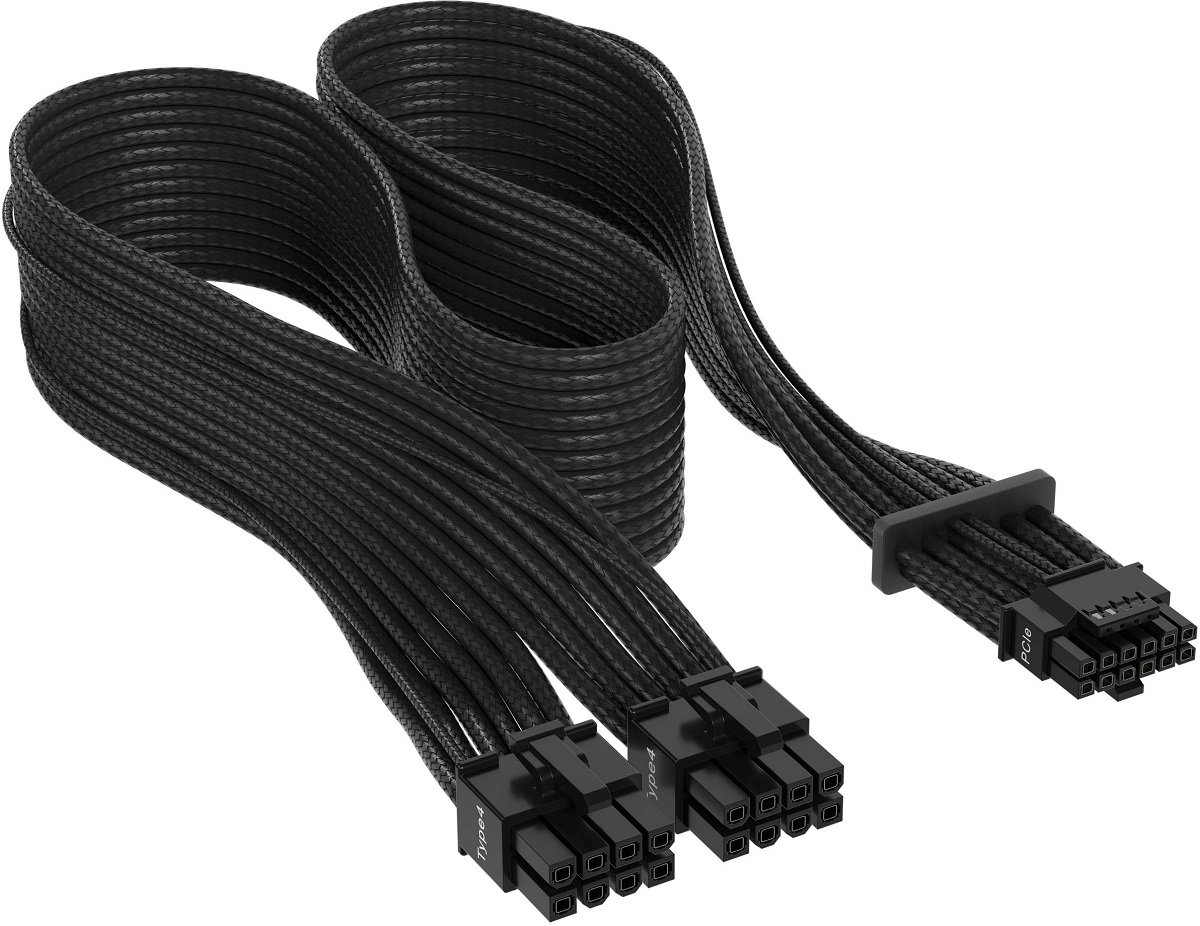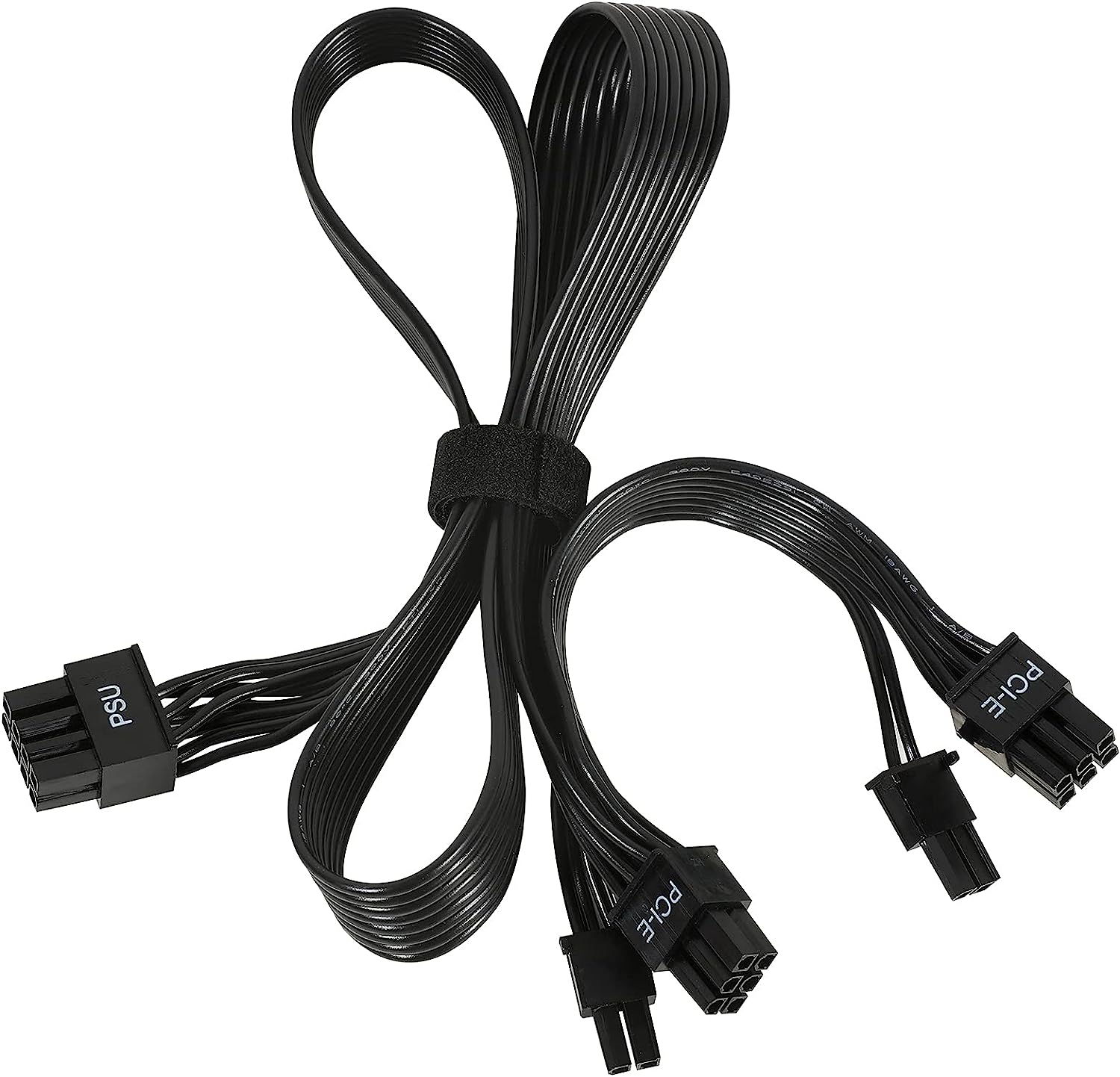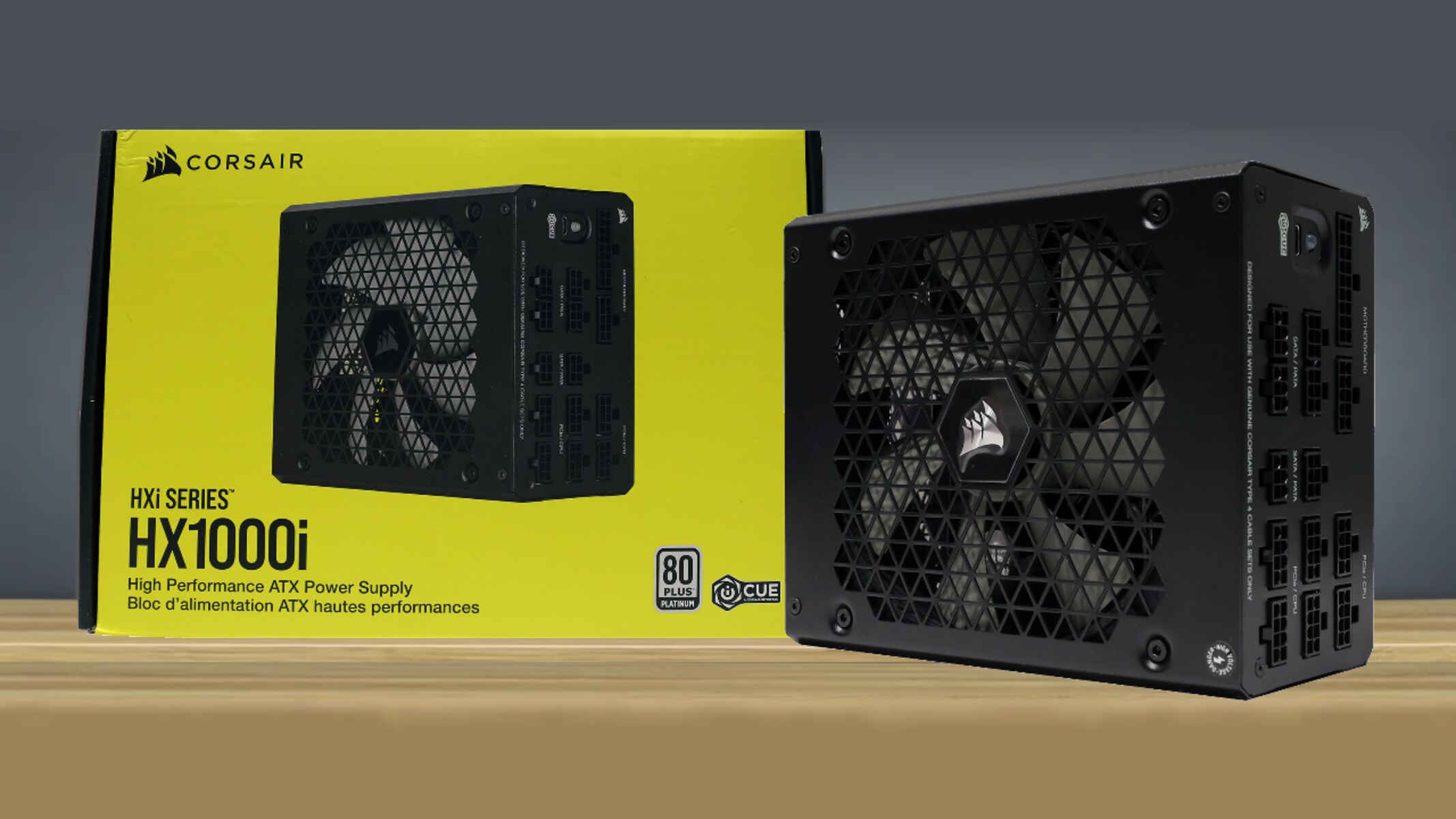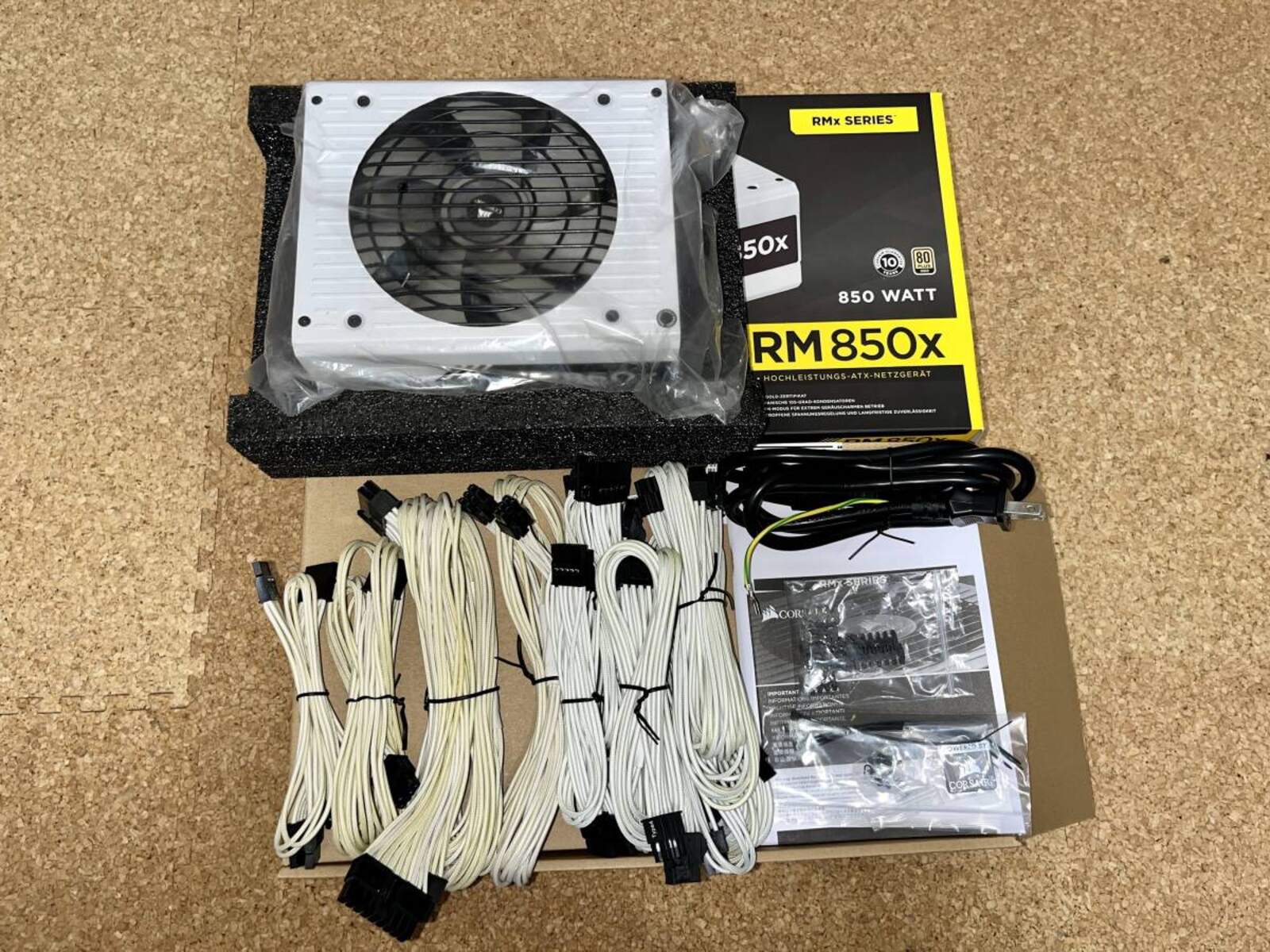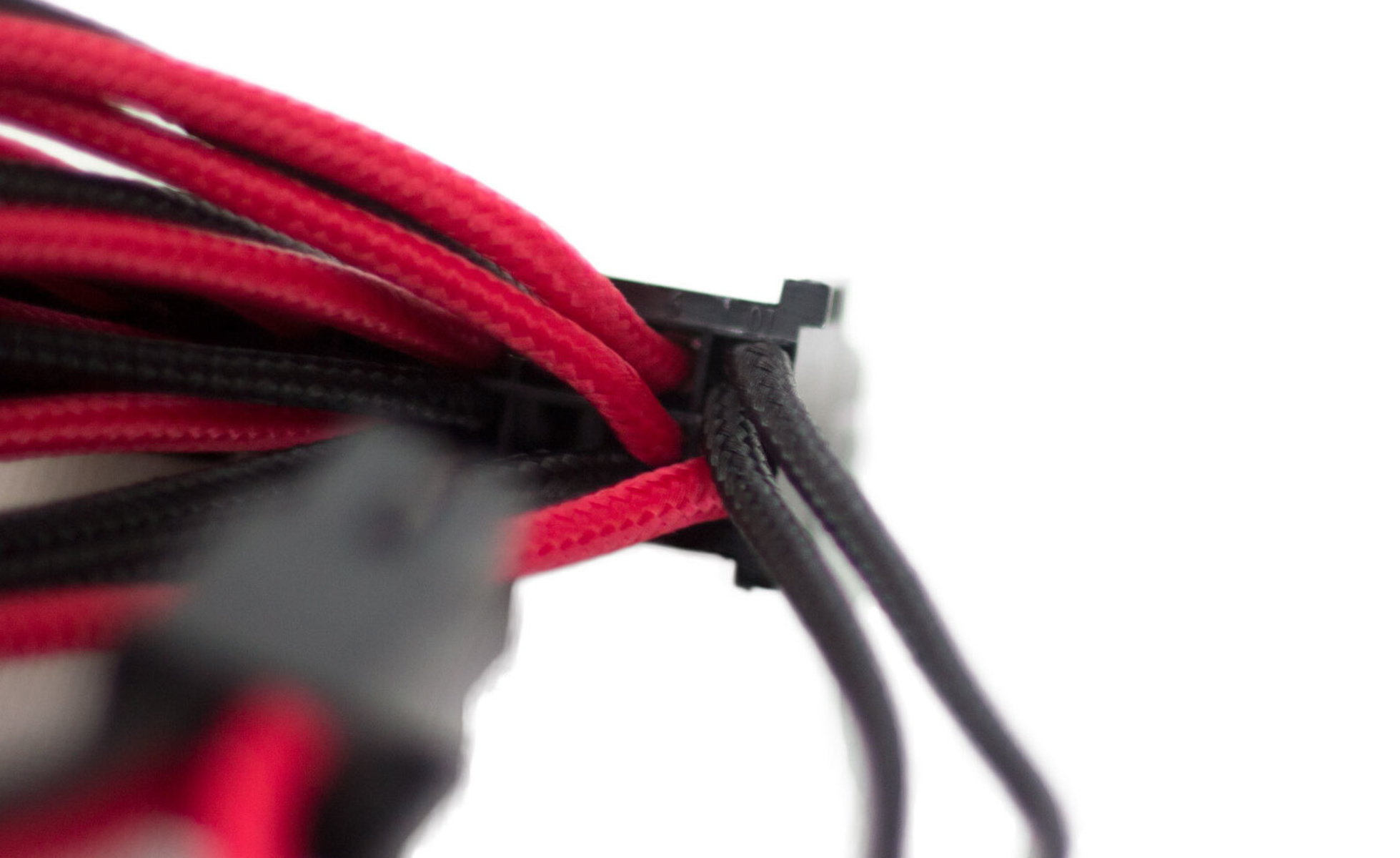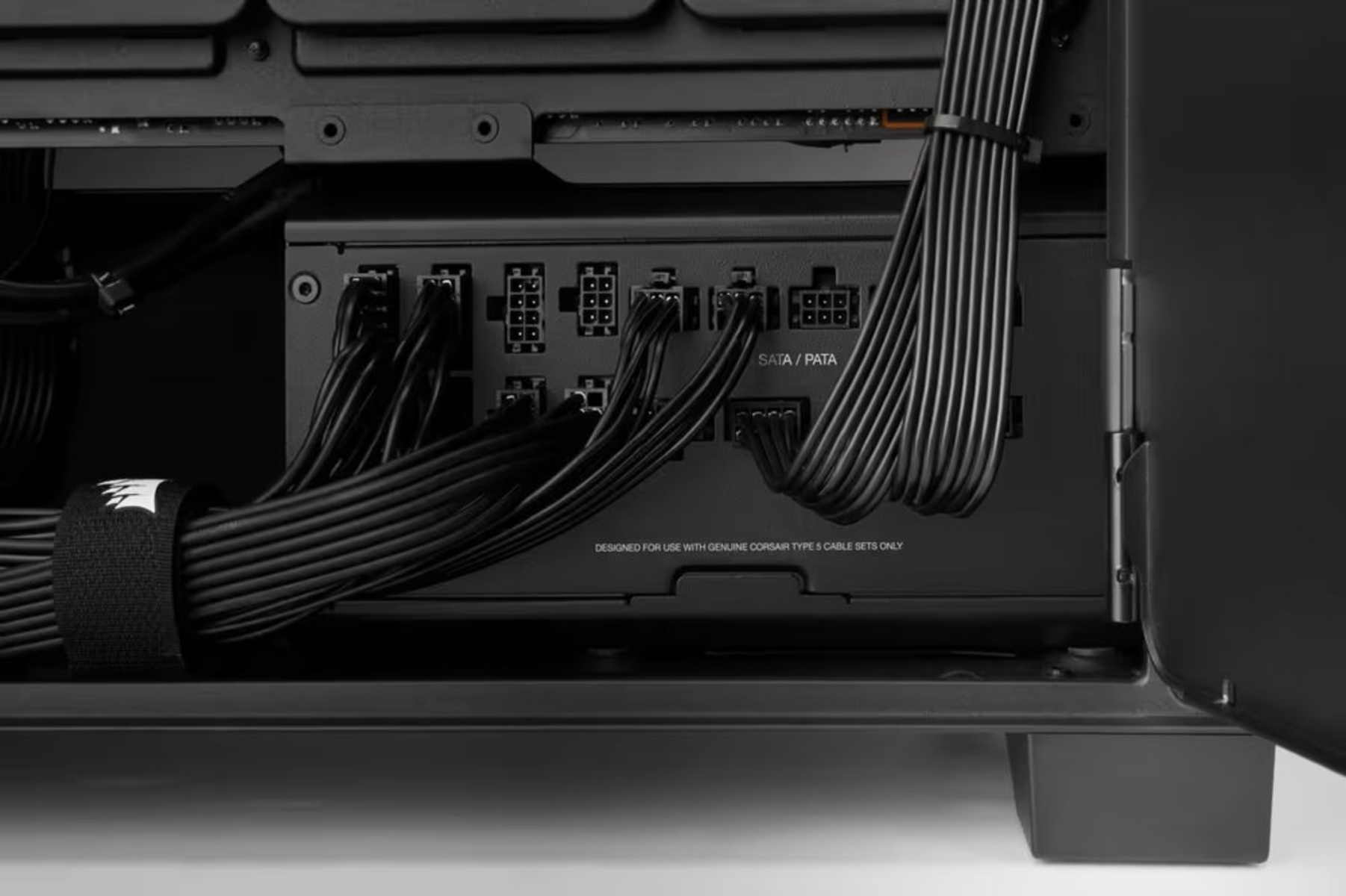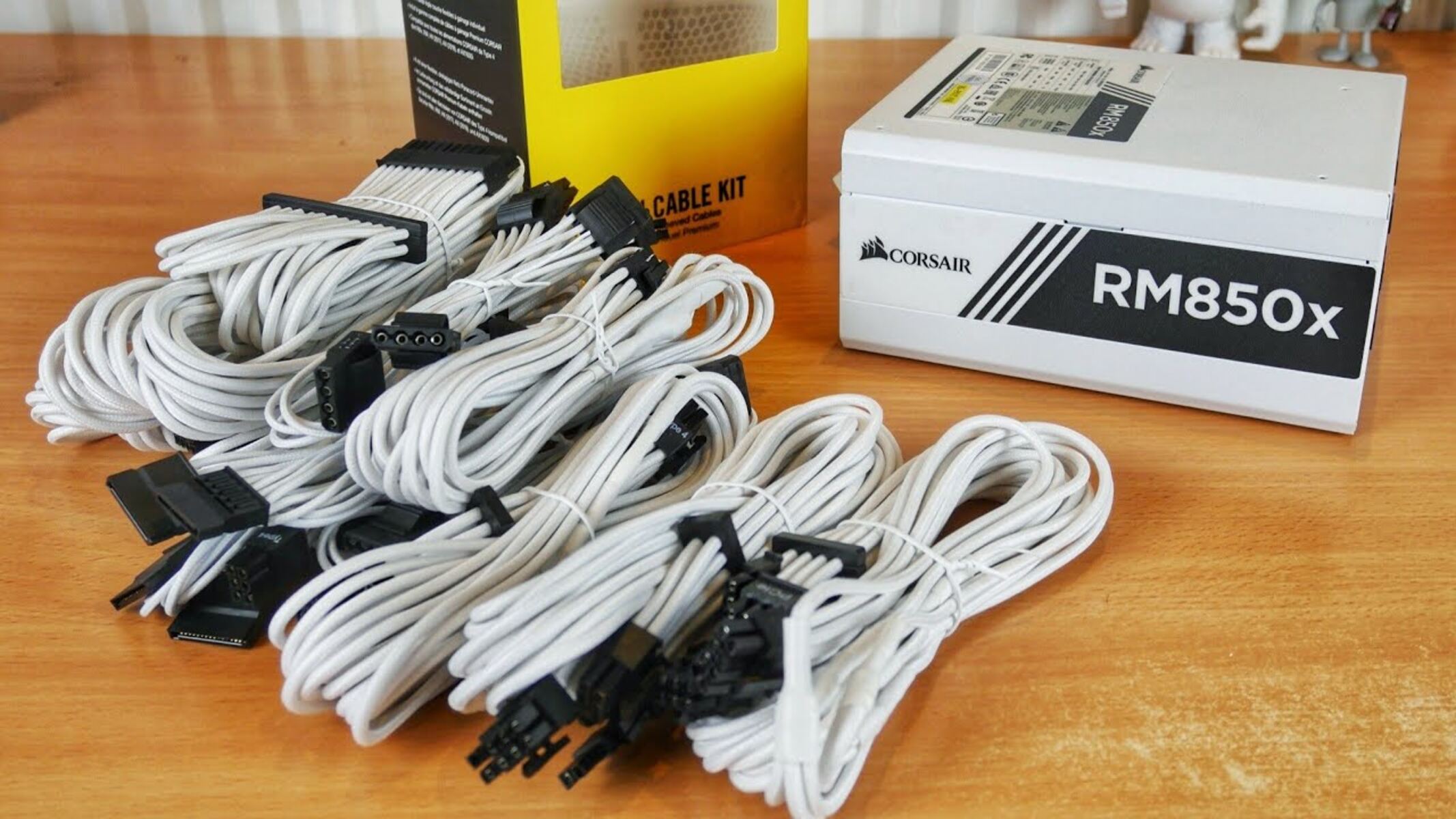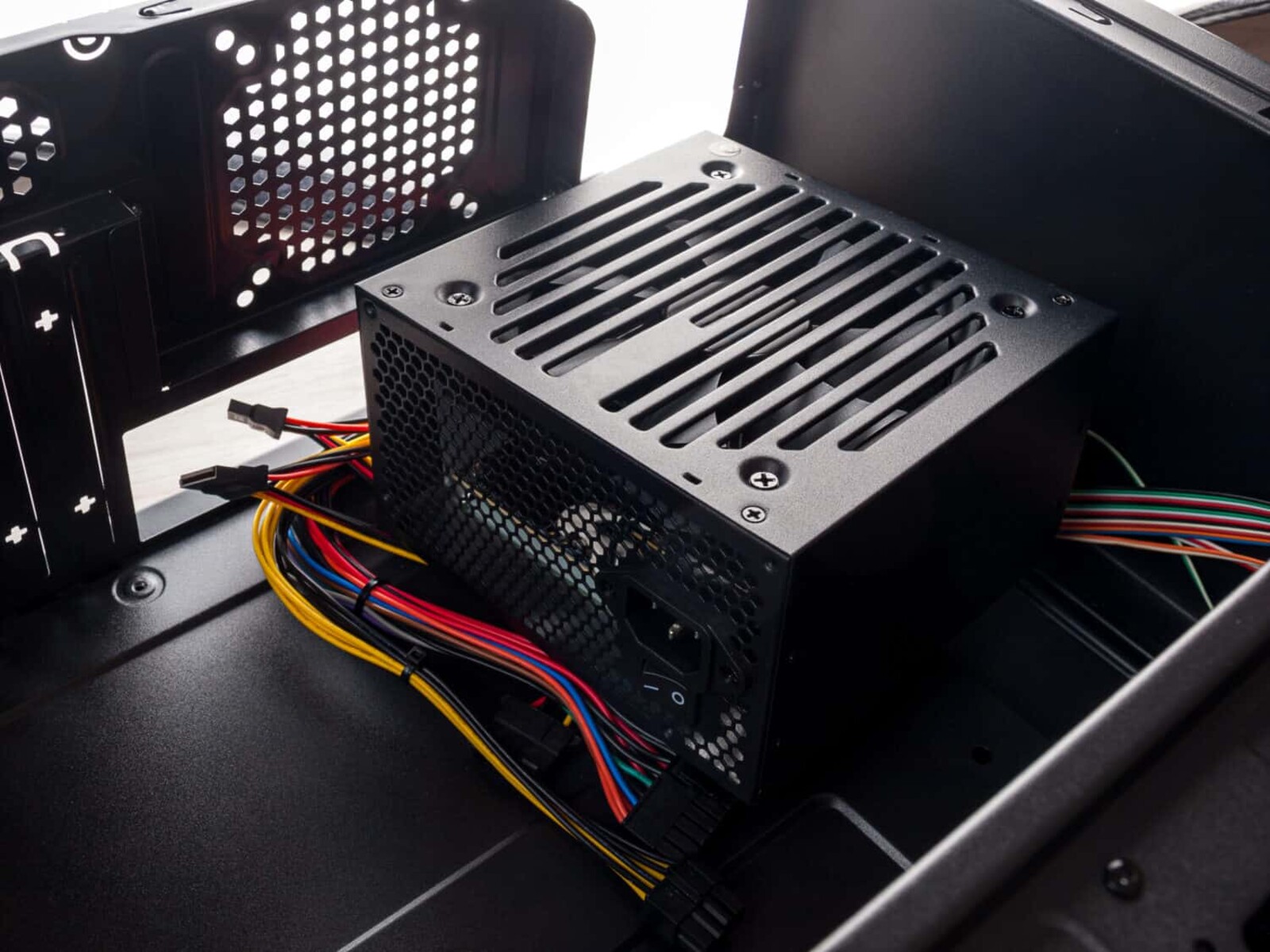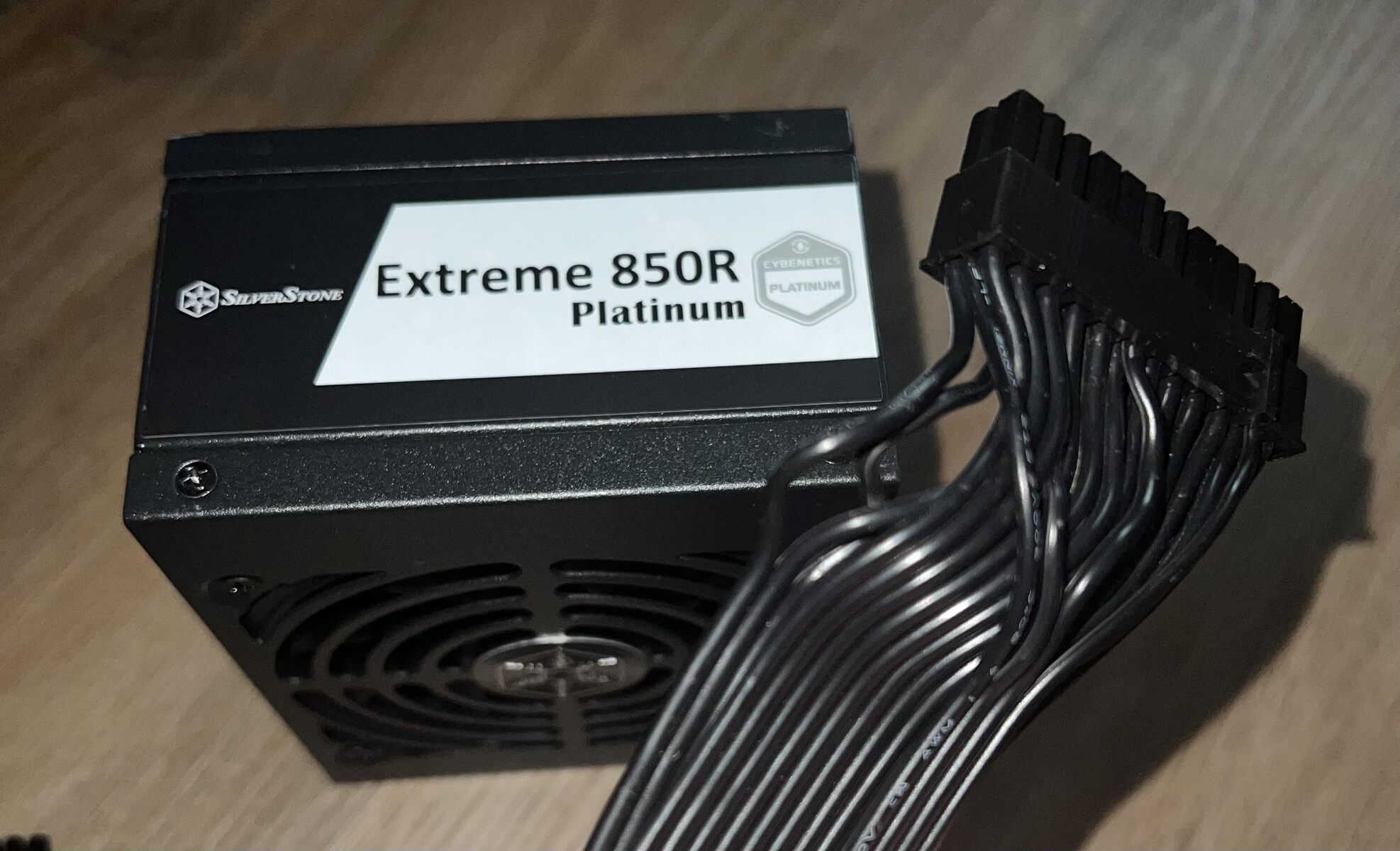Introduction
When it comes to building a custom PC or improving the cable management in your current setup, one crucial element that often goes overlooked is the choice of paracord for PSU cables. Paracord is a durable and versatile cord often used in outdoor activities like camping and survival situations. However, it has also gained popularity in the PC building community for its ability to provide both functionality and aesthetic appeal.
Paracord offers numerous benefits for PSU cables, such as protecting them from damage, improving cable management, and adding a touch of personalization to your setup. Choosing the right gauge paracord is essential to ensure a secure and efficient installation.
In this article, we will explore the importance of paracord for PSU cables and discuss the factors to consider when selecting the appropriate gauge. We will also delve into the benefits of using paracord and provide a step-by-step guide for paracording your PSU cables.
Whether you are a seasoned PC builder or new to the world of custom PC setups, this article will help you understand the significance of paracord for PSU cables and guide you in making the right choices for your next build.
What is paracord?
Paracord, short for parachute cord, is a type of lightweight nylon rope that was originally used in the military for parachutes during World War II. Its strength, durability, and versatility quickly garnered attention outside the military, and it has become a popular choice for outdoor enthusiasts, survivalists, and now PC builders.
Paracord is made up of a casing or sheath on the outside and multiple inner strands, usually consisting of seven or nine individual threads. The outer sheath provides protection and adds to the overall strength and durability of the cord. The inner strands, often referred to as the “guts,” can be deployed and used for various purposes in emergency situations.
One of the main reasons paracord has gained popularity in the PC building community is its aesthetic appeal. Paracord is available in a wide range of colors and patterns, allowing PC enthusiasts to customize the look of their PSU cables and overall cable management. Whether you prefer a sleek and minimalist design or eye-catching color combinations, paracord offers endless possibilities to make your setup unique.
Additionally, paracord is highly flexible and easy to work with, making it an ideal material for managing and organizing cables in tight spaces within a PC case. Its lightweight nature ensures that it doesn’t add unnecessary bulk to your build, while still providing adequate protection to your PSU cables.
Overall, paracord’s combination of strength, flexibility, and aesthetic options make it a versatile choice for PSU cables. Whether you prioritize functionality, visual appeal, or both, paracord is an excellent option to enhance your cable management and create a visually stunning custom PC setup.
Importance of paracord for PSU cables
Paracord plays a vital role in ensuring the integrity and longevity of your PSU cables. Here are some key reasons why paracord is essential for managing and protecting your PSU cables:
1. Cable Protection: PSU cables are susceptible to wear and tear, especially in high-performance systems where they may experience frequent handling and movement. Paracord acts as a protective layer, shielding your cables from abrasion, cuts, and potential damage caused by sharp edges or other components inside your PC case. This added protection helps to extend the lifespan of your cables and maintain optimal performance.
2. Improved Cable Management: The use of paracord allows for better cable management within your PC case. The flexible and lightweight nature of paracord enables you to neatly organize and route your PSU cables, reducing cable clutter and improving airflow. This promotes a cleaner and more efficient system, reducing the risk of overheating and maximizing overall performance.
3. Enhanced Durability: Paracord is known for its exceptional durability and strength. By encasing your PSU cables in paracord, you significantly reinforce their structure, making them more resistant to bending, twisting, and pulling. This added durability ensures that your cables can withstand the rigors of daily use and prevent potential damage caused by accidental tugs or strains.
4. Aesthetic Appeal: Alongside its practical benefits, paracord allows you to enhance the visual aesthetics of your PC setup. With a multitude of colors and patterns available, you can customize your PSU cables to match your build’s theme or create eye-catching contrasts. The ability to personalize your cables not only adds a unique touch to your system but can also serve as a conversation starter among fellow PC enthusiasts.
5. Ease of Maintenance: Paracord makes maintenance and cleaning of your PSU cables a breeze. Unlike bare cables that can accumulate dust and become entangled, encased cables can be easily wiped clean or detangled without fear of damaging the delicate wiring. This convenience simplifies system maintenance and helps to preserve the neat and organized appearance of your PC build.
Overall, the importance of paracord for PSU cables cannot be overstated. It provides essential protection, improves cable management, enhances durability, offers aesthetic customization options, and simplifies maintenance. Incorporating paracord into your PSU cable management strategy is a smart investment that will benefit both the functionality and visual appeal of your PC setup.
Factors to consider when choosing the right gauge paracord
Choosing the right gauge, or thickness, of paracord is crucial to ensure a secure and effective installation for your PSU cables. Here are some key factors to consider when selecting the appropriate gauge:
1. Cable Size: The gauge of your paracord should match the size of your PSU cables. It is important to measure the diameter of your cables before selecting the paracord gauge. Using a paracord that is too thick may result in a bulky and difficult installation, while a paracord that is too thin may not provide adequate protection. Ensuring a proper fit will guarantee a seamless and secure encasing for your cables.
2. Flexibility: Consider the flexibility of the paracord in relation to the maneuverability you require for your PSU cables. If you anticipate frequent repositioning or adjustments, opting for a more flexible paracord will facilitate easier cable management. On the other hand, if your cables are relatively fixed in their positions, a slightly less flexible paracord may be suitable for a snug and secure fit.
3. Aesthetic Preference: The paracord gauge can also affect the visual appeal of your PSU cables. Thicker gauges may have a bolder and more pronounced appearance, while thinner gauges can provide a sleek and minimalist look. Consider your desired aesthetic outcome and choose a gauge that complements your overall PC setup and personal style.
4. Ease of Installation: The ease of installation may vary depending on the paracord gauge. Thicker gauges may require more effort to thread through tight spaces and connectors, while thinner gauges can be more easily maneuvered and inserted. Assess your comfort level and available time for the installation process to select a gauge that suits your capabilities and requirements.
5. Durability: Different gauge paracords offer varying levels of durability. Thicker gauges generally provide enhanced protection against potential damage and wear, while thinner gauges may be more susceptible to fraying or breaking under stress. Consider the expected usage and handling of your PSU cables to determine the appropriate gauge that balances durability and flexibility.
6. Heat Dissipation: It’s essential to consider the airflow and heat dissipation within your PC case. Thicker gauges may impede proper airflow if they restrict ventilation channels, potentially leading to overheating. Ensure that the paracord gauge allows for sufficient air circulation to maintain the optimum temperature for your components.
By taking into account these factors when choosing the right gauge paracord for your PSU cables, you can achieve a well-fitted, visually appealing, and durable cable management solution that meets your specific needs and enhances the overall performance of your PC setup.
Benefits of using paracord for PSU cables
Using paracord for your PSU cables offers numerous advantages that go beyond just cable management. Here are some key benefits of utilizing paracord for PSU cables:
1. Protection: Paracord provides a protective barrier for your PSU cables, shielding them from potential damage and extending their lifespan. The durable outer sheath of the paracord acts as a physical barrier, safeguarding the cables against abrasion, cuts, and other external hazards that could compromise their functionality.
2. Cable Management: Paracord offers an effective solution for organizing and managing your PSU cables. By encasing the cables in paracord, you can keep them neatly bundled together and minimize cable clutter inside your PC case. This not only improves the overall aesthetic appearance but also enhances airflow and optimizes cooling, resulting in better system performance.
3. Flexibility: Paracord is highly flexible, making it easy to route and maneuver your PSU cables within your PC case. This flexibility allows for precise cable placement, ensuring that each cable can reach its intended destination without straining or stretching. The ease of cable management that paracord offers simplifies installation and future maintenance tasks.
4. Customization: One of the most appealing aspects of using paracord for PSU cables is the ability to customize the look of your PC setup. Paracord comes in a wide array of colors and patterns, allowing you to match your build’s theme or create eye-catching contrasts. This customization adds a personal touch to your PC and makes it stand out from the crowd.
5. Noise Reduction: PSU cables can sometimes produce unwanted noise due to vibration. By encasing the cables in paracord, you can minimize the potential for cable vibration and reduce noise levels. This helps create a quieter and more enjoyable computing experience without any distracting humming or buzzing sounds.
6. Easy Maintenance: Paracord simplifies the maintenance and cleaning of your PSU cables. The smooth surface of paracord makes it easy to wipe clean, removing any dust or debris that may accumulate over time. Additionally, the encased cables are less likely to tangle or become tangled with other components, making cable management and cable routing adjustments hassle-free.
7. Reusability: Paracord is highly reusable, allowing you to remove and reinstall it as needed. This flexibility is particularly beneficial in scenarios such as system upgrades or if you decide to modify your cable routing. You can easily detach the paracord, make the necessary changes, and re-encase your PSU cables without the need for new materials.
By harnessing these benefits of using paracord for PSU cables, you can achieve improved cable protection, enhanced cable management, customization options, noise reduction, easy maintenance, and the flexibility to adapt to future changes in your PC setup.
Common gauge options for paracord
Paracord is available in various gauge options, referring to the thickness of the cord. Here are some of the most common gauge choices for paracord:
1. Type I (Micro Paracord): This is the thinnest gauge option, with a diameter of around 1.18mm. It is commonly used for smaller projects or for adding fine details to larger projects. While it may not provide as much protection or durability as thicker options, it offers excellent flexibility and is suitable for delicate cable management needs.
2. Type II (Standard Paracord): Standard paracord typically has a diameter ranging from 2-3mm. It is widely used for a variety of applications, including PSU cable management. This gauge strikes a good balance between flexibility and durability, making it suitable for most cable management needs. It offers adequate protection while remaining easy to work with.
3. Type III (550 Paracord): 550 paracord, also known as Type III, is one of the most popular and widely available options. It has a diameter of around 3.5-4mm and is known for its strength and durability. This gauge is capable of withstanding heavier usage and provides excellent protection for PSU cables. It is a versatile choice and can handle more demanding cable management requirements.
4. Type IV (750 Paracord): Type IV paracord has a slightly larger diameter than Type III, ranging from 4-5mm. It offers increased strength and durability, making it ideal for heavy-duty applications. While it may be less flexible than thinner gauges, it provides superior protection for PSU cables, especially in situations where added durability is required.
5. Type V (1000 Paracord): Type V paracord, with a diameter of approximately 5-6mm, is the thickest and strongest gauge option available. It offers maximum durability and protection for PSU cables, making it suitable for high-performance systems or environments where extreme conditions may be encountered. The increased thickness may require additional care during installation due to reduced flexibility.
It is important to select a gauge that matches the specific requirements of your PSU cables and your overall cable management needs. Thinner gauges offer greater flexibility and are suitable for smaller or more delicate setups, while thicker gauges provide enhanced protection for larger or more demanding systems.
Before making a final decision, consider the size of your cables, intended usage, desired aesthetics, and flexibility requirements. By carefully considering these factors, you can choose the most appropriate gauge of paracord to achieve optimal cable management and protection for your PSU cables.
How to determine the appropriate gauge for PSU cables
Choosing the appropriate gauge of paracord for your PSU cables involves considering several factors. Here are some steps to help you determine the right gauge:
1. Measure the cable size: Start by measuring the size of your PSU cables. You can use a caliper or a measuring tape to determine the diameter of the cables. This measurement will serve as a basis for selecting the appropriate gauge of paracord. Keep in mind that cables with a larger diameter may require a thicker gauge for optimal fit and protection.
2. Consider flexibility: Think about how much flexibility you need for your PSU cables. Thinner gauge paracords are generally more flexible, making them easier to manipulate and route through tight spaces. However, if you have bulkier cables or plan to route them in a fixed position, a slightly thicker gauge may provide better durability and support.
3. Evaluate aesthetic preferences: Consider the visual appeal you want to achieve with your cable management. Thicker gauge paracord can have a more prominent presence and may create a bold visual effect. Thinner gauges, on the other hand, can offer a sleek and streamlined appearance. Choose a gauge that matches your overall design goals and complements your PC setup.
4. Assess durability needs: Think about the level of durability your PSU cables require. Thicker gauges provide increased protection against potential damage, such as cuts or abrasion. If you anticipate your cables being exposed to greater wear and tear, like frequent handling or movement, opting for a thicker gauge will offer better safeguarding. Thinner gauges, while still providing adequate protection, may be more suitable in less demanding scenarios.
5. Consider cooling requirements: Evaluate the airflow and cooling needs within your PC case. Thicker gauge paracords may occupy more space and restrict airflow if not properly managed. Ensure that the selected gauge allows for sufficient air circulation to maintain optimal temperatures for your components. In cases where cooling is a top priority, opting for a slightly thinner gauge may be beneficial.
By taking into account the cable size, flexibility, aesthetic preferences, durability needs, and cooling requirements, you can determine the appropriate gauge of paracord for your PSU cables. It’s important to strike a balance between the protection and flexibility offered by the chosen gauge to achieve the best cable management and overall performance in your PC setup.
Step-by-step guide to paracording PSU cables
Paracording PSU cables can be a rewarding project that enhances cable management and adds a personalized touch to your PC setup. Here is a step-by-step guide to help you through the paracording process:
1. Gather the necessary materials: Start by gathering all the materials you will need, including the paracord in your desired gauge, a pair of sharp scissors or a hot knife, cable ties, and heat shrink tubing (optional).
2. Prepare the PSU cables: Ensure that your PSU cables are clean and free from any dust or dirt. Straighten out the cables and remove any existing cable sleeves or coverings.
3. Measure and cut the paracord: Measure the length of paracord you will need for each cable, allowing extra length to cover the entire cable. Use a pair of sharp scissors or a hot knife to carefully cut the paracord to the desired length.
4. Thread the paracord onto the cable: With one end of the paracord open, carefully thread the cable through the paracord, ensuring that the paracord is centered and covers the entire length of the cable. Take your time to avoid twisting or tangling the paracord as you thread it onto the cable.
5. Secure the ends: Once the paracord is threaded onto the cable, secure the ends to prevent the paracord from slipping off. You can use small cable ties or heat shrink tubing to hold the paracord in place securely.
6. Repeat for each cable: Follow the same process for each PSU cable, ensuring that the paracord is evenly applied and covers the entire length of the cable. Take care to maintain consistency in the tightness and alignment of the paracord across all the cables.
7. Trim excess paracord: Once all the cables are paracorded, inspect them for any excess paracord. Carefully trim any excess length to create a neat and finished look. Be cautious not to cut into the cables while trimming the paracord.
8. Reconnect the cables: Once you have completed paracording all the cables, reconnect them to the appropriate components in your PC. Double-check that all connections are secure and properly aligned.
9. Cable management: Organize and route the paracorded PSU cables to achieve the desired cable management layout. Use cable ties or other cable management tools to secure the cables in place and ensure they are neatly arranged.
10. Test and admire: Power up your PC and test that all components are functioning properly. Admire your paracorded PSU cables and enjoy the improved aesthetics and cable management in your PC setup.
Following this step-by-step guide will help you achieve clean, organized, and visually appealing PSU cables that not only enhance the overall look of your PC but also provide added protection and durability.
Tips for a successful paracord installation
Installing paracord onto your PSU cables can be a fulfilling DIY project. To ensure a successful installation, consider the following tips:
1. Plan and prepare: Before starting the installation, plan out your cable management strategy. Consider the routing and placement of the cables within your PC case. Prepare the necessary tools, such as scissors, cable ties, and heat shrink tubing, to ensure a smooth installation process.
2. Take your time: Paracording PSU cables requires patience and attention to detail. Take your time to thread the paracord onto the cables, ensuring it is centered and evenly applied. Rushing the process may result in uneven or loose paracording, compromising the final appearance.
3. Use heat to seal the paracord ends: To prevent fraying or unraveling of the paracord ends, use a heat source like a lighter or a heat gun to gently melt and seal them. Be careful not to apply too much heat, as it can damage the paracord or the cables. Practice this technique on a scrap piece of paracord before attempting it on the actual cables.
4. Prioritize cable protection: While aesthetics are important, don’t overlook the primary purpose of paracord – protecting your PSU cables. Ensure that the paracord fully covers the cables and provides adequate insulation. Pay attention to sharp edges or potential areas of friction where extra protection may be needed.
5. Maintain consistent tension: As you thread the paracord onto the cables, maintain a consistent tension to ensure a professional and uniform appearance. Avoid excessive tightening, as it may put unnecessary stress on the cables, and too loose may result in a messy look.
6. Trim excess paracord neatly: After completing the paracording process, trim any excess paracord carefully. Use sharp scissors to achieve clean and precise cuts. Take your time to ensure that the trimmed ends blend seamlessly with the rest of the paracord, creating a polished and finished look.
7. Practice cable management techniques: Proper cable management is essential for a clean and organized PC setup. Use cable ties, hook-and-loop straps, or other cable management tools to secure and route the paracorded PSU cables. Keep cables away from fans, components that generate heat, or any moving parts to ensure optimal airflow and prevent potential damage.
8. Consider individual cable sleeves: In addition to paracording, you can also use individual cable sleeves for added customization and organization. These sleeves can be threaded onto specific cables, allowing you to highlight or differentiate them from the rest.
9. Seek inspiration: Look for inspiration from online PC-building communities, forums, and tutorials. Explore different color combinations, patterns, and cable management techniques to find ideas that align with your vision for your PC setup.
10. Practice and improve: Like any DIY project, paracording PSU cables may require practice to master. Don’t be discouraged if your first attempts aren’t perfect. Learn from each installation, implement feedback, and continually improve your skills for future projects.
By following these tips, you can achieve a successful paracord installation that enhances the aesthetics, protection, and cable management in your PC setup.
Conclusion
Paracording PSU cables offers a multitude of benefits for PC enthusiasts looking to improve their cable management and customize their setup. By encasing your cables in paracord, you can provide crucial protection against damage, enhance the visual appeal of your PC, and optimize airflow for better system performance.
When considering paracord options, it’s important to choose the appropriate gauge based on factors such as cable size, flexibility needs, durability requirements, and cooling considerations. Thicker gauges provide more robust protection, while thinner gauges offer greater flexibility for intricate cable management layouts.
A successful paracord installation requires careful planning, attention to detail, and patience. By following the step-by-step guide and implementing useful tips, you can achieve a clean and organized cable management system that elevates the overall aesthetics of your PC setup.
Remember to prioritize cable protection and maintenance, as paracord not only improves the appearance of your cables but also provides a layer of insulation that can extend their lifespan and prevent potential damage.
Whether you are a seasoned PC builder or a beginner, paracording PSU cables is a satisfying project that allows you to showcase your creativity while improving the functionality of your PC. So go ahead, unleash your DIY spirit, and embark on the journey of paracording your PSU cables. Enjoy the sense of accomplishment and satisfaction that comes with a well-managed and visually appealing PC setup.







